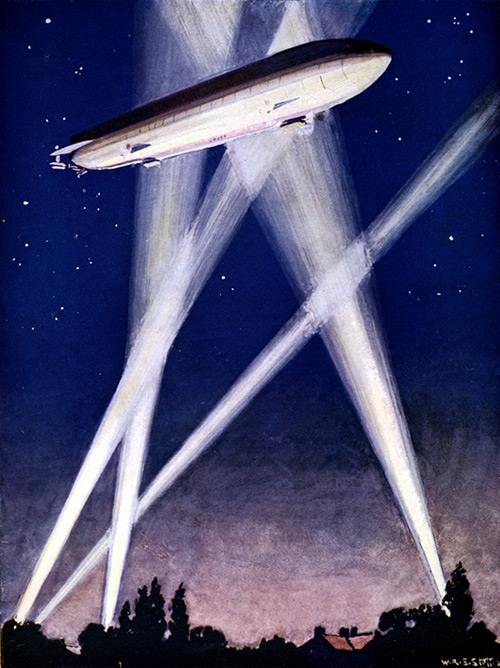This month in history: World War 1 Norfolk Zeppelin raids
“I saw a bomb drop through the skylight and strike the pillow where Percy was lying… I tried to wake him but he was dead. Then the house fell in. I don't remember any more.”
 During WW1, Great Yarmouth in Norfolk was the first British town to experience the horror of
civilian fatalities during an aerial bombardment, with King’s Lynn soon to follow.
During WW1, Great Yarmouth in Norfolk was the first British town to experience the horror of
civilian fatalities during an aerial bombardment, with King’s Lynn soon to follow.
On the morning of 19 January 1915, 2 German Zeppelin airships, the L3 and L4, took off from Fuhlsbüttel in Hamburg, Germany. The airships had been heading for the Humber, but bad weather led them to reroute and discharge their bombs over Norfolk.
The Zeppelin airships crossed the Norfolk coastline at about 8.30pm. The L3, captained by Captain Lieutenant Johann Fritz, then turned south east, towards Great Yarmouth, and the L4, under the command of Kapitanleutnant Count Magnus von Platen-Hallermund, turned north west, towards King’s Lynn.
The L3’s path
After dropping parachute flares between the coastal villages of Happisburgh and Winterton to assist navigation, and incendiary bombs with no fatalities caused, the Zeppelin L3 dropped bombs on the working class district of St Peters Plain in Great Yarmouth.
The bombing's 2 fatalities were killed instantly. Samuel Smith, a 53-year-old shoemaker, was the first British civilian to be killed by aerial bombardment. He was said to be standing in the road when the bomb dropped.
Martha Taylor, 72, lived at 22 St Peter’s Plain, and was next to be killed in the attack. A blue plaque, unveiled in 2012, stands in their memory on St Peter’s Plain.
Extensive damage was also caused to the area. Windows were blown out and walls and woodwork shattered in all directions, and there was devastating blast damage to the front of St Peter’s Villa. Beeching’s South Dock was hit when two vessels were targeted.
The L4’s path
After dropping incendiary bombs on Sheringham, Brancaster, Heacham, Snettisham, Dersingham and Grimston, the L4 went on to King’s Lynn at about 10.50pm. The town had been plunged into darkness on the town’s chief constable’s orders, but the streetlights had already been seen. Bombs were dropped that were to cut short the lives of Alice Gazeley, 26 – widowed just 3 months earlier after her husband had been killed on the Western Front – and Percy Goate, aged just 14.
Percy’s mother said in an inquest report: “I saw a bomb drop through the skylight and strike the pillow where Percy was lying… I tried to wake him but he was dead. Then the house fell in. I don't remember any more.” A further 13 people were injured, as further bombs went on to destroy densely-packed terraced houses and damage the town’s docks.
After dropping bombs on King’s Lynn, the L4 turned east, ignoring the city of Norwich, most likely due to poor visibility, and headed towards the coast.
This air raid brought the effects of war home to the British people. These were not military men, but civilians, as young as 14, going about their everyday lives, who were the victims. There was much anger, and morale among the British people dropped as further raids were feared, and the dread that a German invasion would be soon to follow.
About 52 raids by Zeppelin and other airships were carried out on the UK during WW1, killing a total of 557, and injuring 1,358.
See also: The Defence of the Realm Act (DORA) (Gazette issue 28859)
